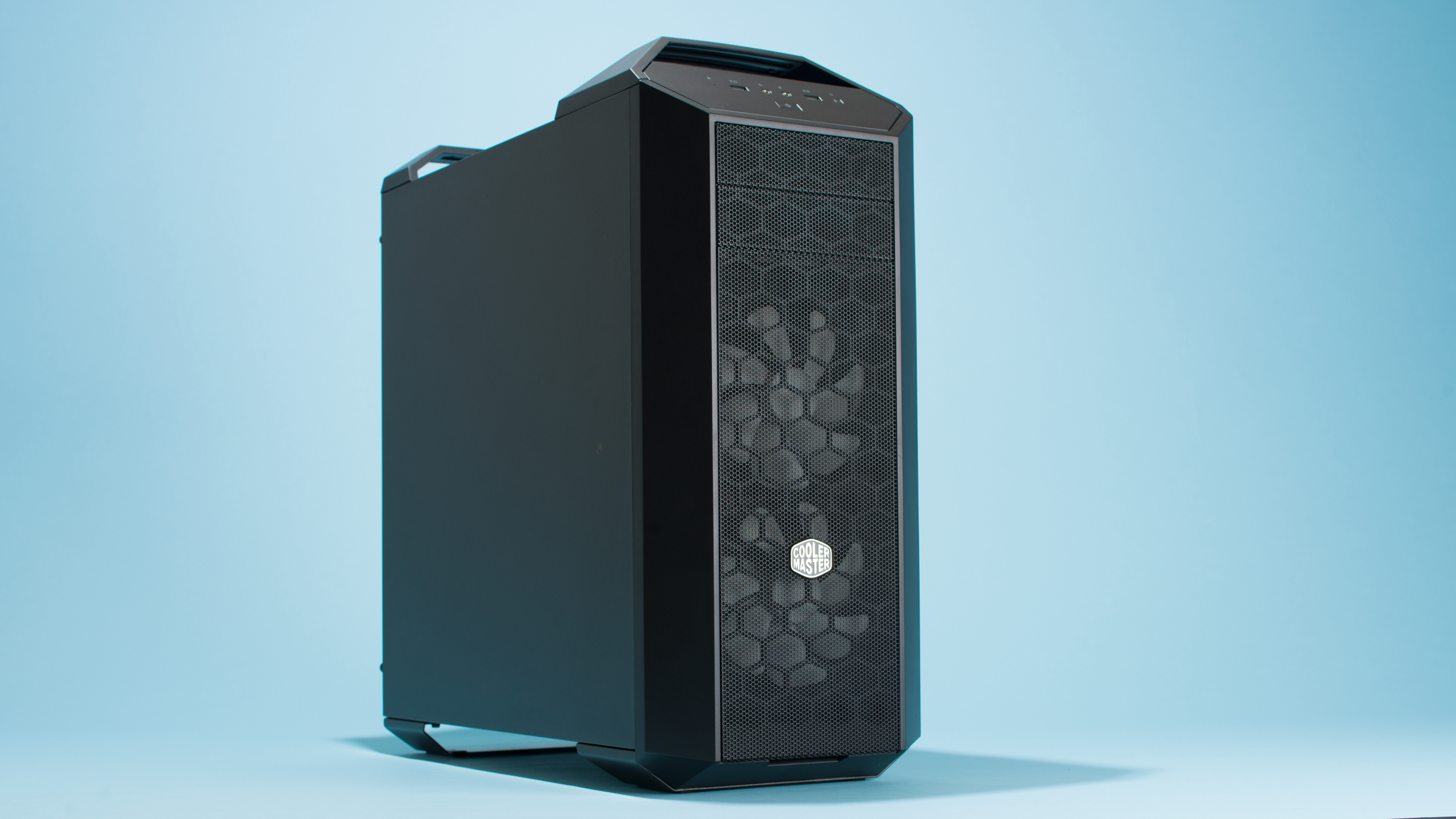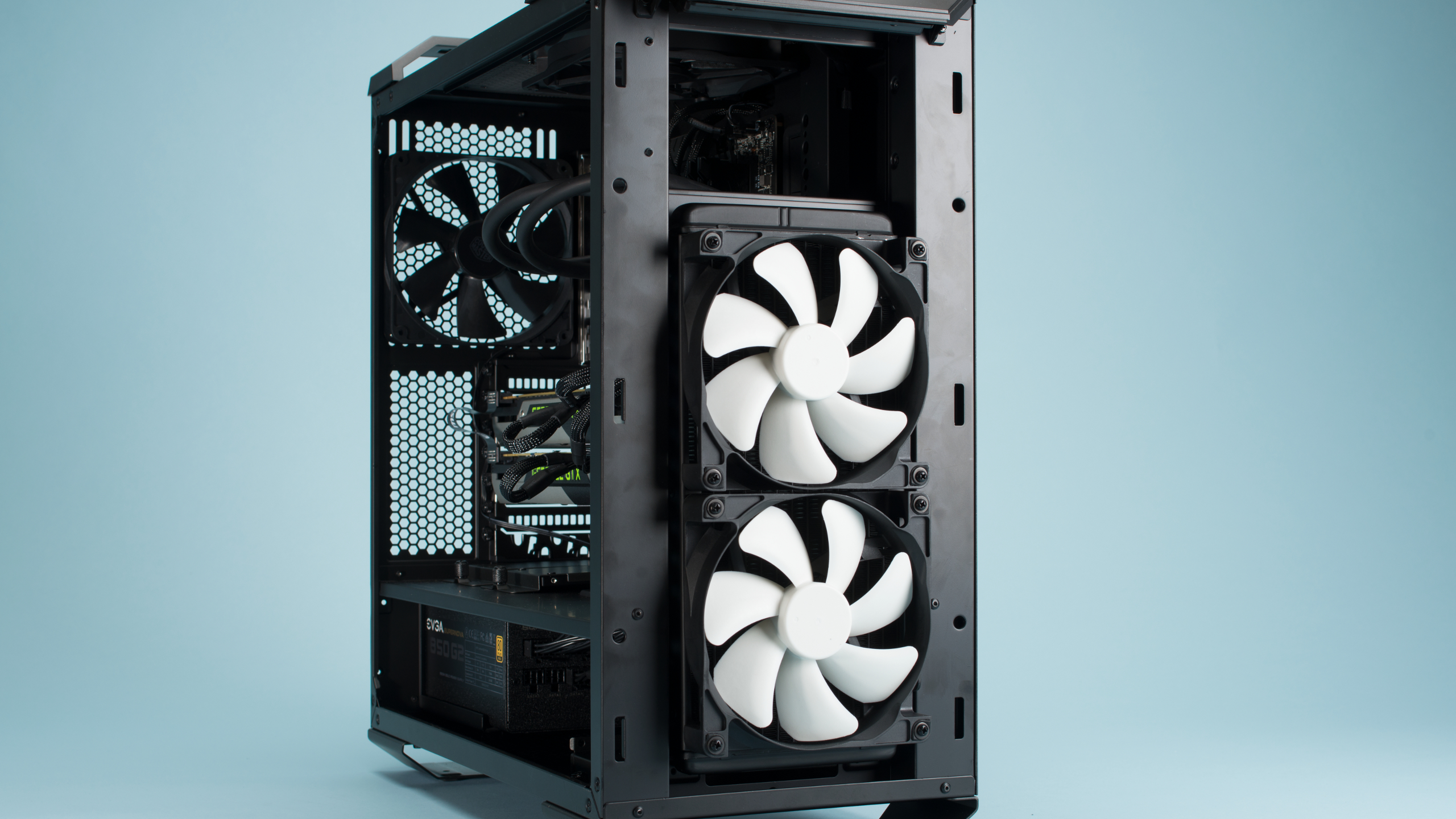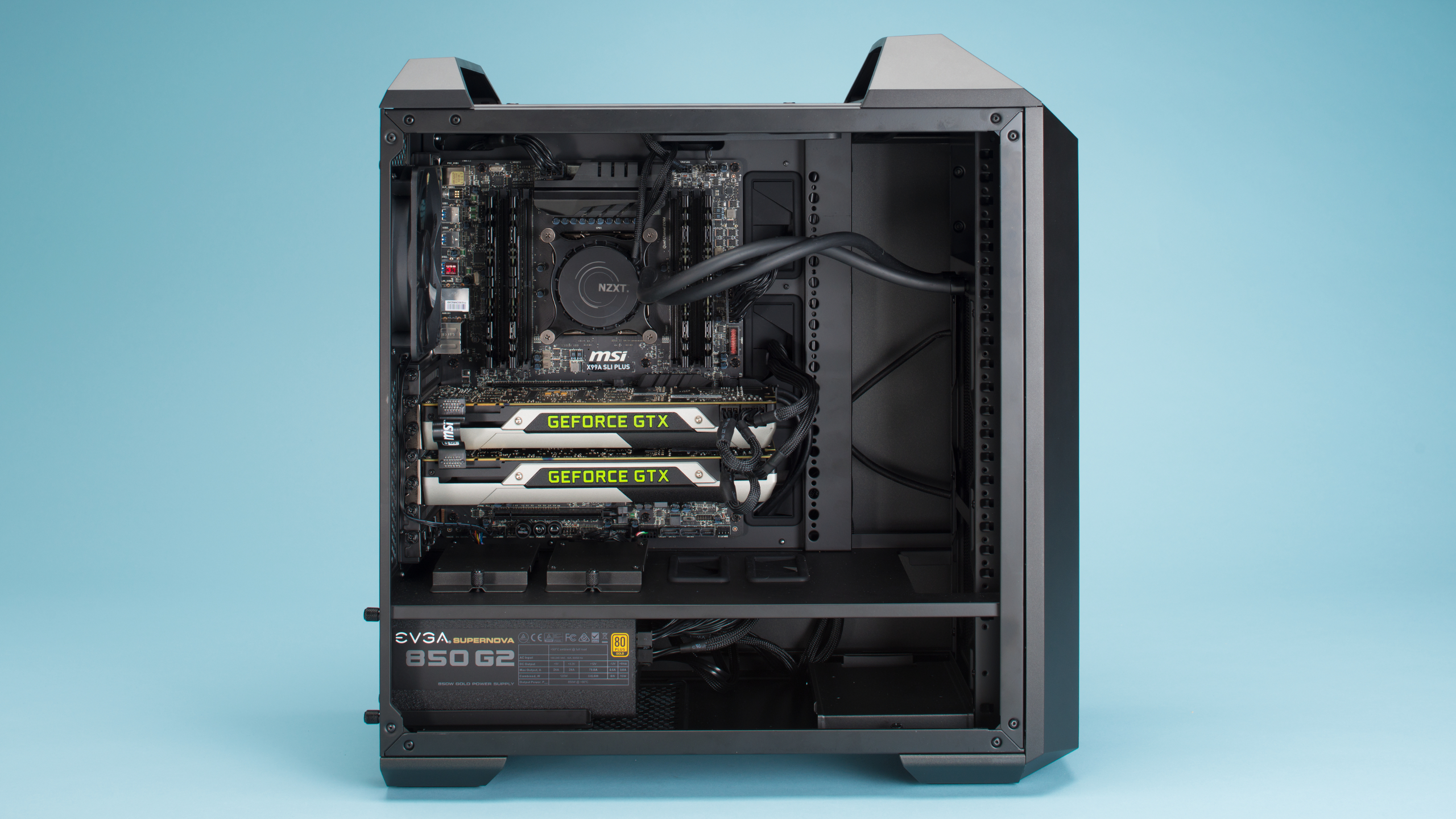The Winter 2016 Turbo

4K? A-OK
Ah, the Turbo. How we love thee, with thy i7 CPU and heaps of memory. With clock speeds fast and FPS high, thy power has the ability to make one cry.
Well, maybe not cry, but we still look forward to building the Turbo each season. The Turbo is our power rig, only bested by our Dream Machine (or overpowered Build Its). With a target budget of $3,000, the Turbo is a little cheaper than some boutique systems. However, this machine is by no means cheap. We don't expect every gamer to be able to justify the Turbo. For most gaming needs, the Midrange Rig will usually suffice.
The Turbo is for enthusiasts who are looking for a little more power. It's also for those who really feel the need to be able to play games at 4K at 60 frames per second.
Each time we build a new Turbo, we make a few tweaks, but the main themes remain the same. Haswell-E CPUs, X99 chipsets, and high-powered graphics cards form the core of the system. That still leaves plenty of room for customization. So, what did we customize this time around? Let's see:
| Row 0 - Cell 0 | Component | Price |
| CPU | Intel Core i7-5820K | $385 |
| GPU | 2x PNY GeForce GTX 980 Ti (reference) | $1,280 ($640 each) |
| Mobo | MSI X99A SLI Plus | $225 |
| Memory | 32GB (4x8GB) G.Skill Ripjaws 4 Series DDR4-2666 | $180 |
| SSD | 256GB Samsung 950 Pro M.2 NVMe | $182 |
| SSD | 1TB Samsung 850 Pro 2.5-inch SATA | $330 |
| PSU | EVGA SuperNOVA G2 850W 80 Plus Gold | $130 |
| CPU Cooler | NZXT Kraken X61 280mm | $140 |
| Case | Cooler Master MasterCase 5 Mid-Tower | $109 |
| Row 10 - Cell 0 | Total | $2,961 |
Prices reflect in-cart price at time of procurement. Prices fluctuate and may change daily. Listed prices include instant rebates, but do not include tax or mail-in rebates.
Return of the Master Case
We first made use of Cooler Master's super-modular MasterCase 5 when we built the /r/PCMasterRace-inspired "Gloriousness" Build It. The case has a lot to offer, and is handsome to boot, so we gave it another go with this build.
One of our favorite things about this case is that you can remove or add cages and other elements as you see fit. Lots of cases allow you to remove hard drive cages, but how many allow you to remove the 5.25-inch ODD cage too? Not many.
The biggest gaming news, reviews and hardware deals
Keep up to date with the most important stories and the best deals, as picked by the PC Gamer team.

The whole case is designed to be customizable with nothing more than your own two hands. Be that as it may, the thumbscrews do come a little on the tight side, so having a screwdriver handy for the initial removal is handy. You'll also need the screwdriver for things like attaching the mobo to the standoffs and attaching your cooling, but that's pretty standard everywhere anyway.
While the case has two placement options for radiators and fans, we opted for the front of the case for our Kraken. An attachment is available that fits on top of the case, allowing for big radiators to be mounted on top of the top fan bracket.
The case is also available with a side window, though we opted for a solid door in this build. If you ever change your mind, you can order the door separately.
No more spinning
We opted to go for all solid-state storage in this Turbo build. This was a bit of a tricky decision, since for $3,000 you'd expect heaps of storage plus some to spare. Our Fall 2015 Turbo offered four 1TB WD Blacks so that we could store games in a RAID 10 array. With this in mind, the decision to go with just 1TB of backup storage can be shocking. (Note that it's half the capacity of a RAID 10 array of four 1TB drives, though.)
We spent some more cash on nabbing a Samsung 950 Pro, a speedy NVMe SSD. The only problem with NVMe is that it's stupid expensive. Since we didn't want to spend over $300 on just 512GB of storage, we opted to nab the cheaper 256GB model and store our other data on a 1TB 850 Evo. That 1TB Evo isn't cheap either, but we feel that 1TB of storage is the minimum (and even under that, depending on use case) for a rig at this price.

While it's not the most economical approach at the moment, we believe that future gaming PCs (and PCs in general) will slowly eschew spinning hard drives for SSDs as prices come down. The main exception to this rule may be the rise of consumer network-attached storage (NAS) devices. By storing the big, heavy items like movies, music, and photos on a NAS, the need for a beefy local HDD begins to disappear. Really, the only reason you would need beefier local storage in a consumer configuration is to house a massive Steam library.
For workstation power users, speed of storage may trump raw capacity. Of course, there's a need for capacity as well, but loading up big files quickly means SSDs almost by default, and lots of them.
The benchmarks
If there's one thing that's great about running benchmarks on the Turbo, it's that it usually doesn't take too long. The hexa-core i7 makes short work of multi-threaded tests, while the akimbo GTX 980 Tis make watching the 4K tests actually kinda fun.
Without a huge spiritual change in the core CPU and GPU combination, the performance was right on par with what we saw in the Turbo last fall. In 3dMark Fire Strike, the Turbo smashed the test, offering smooth visuals for us to ogle as the test ran. With a score of 7,020, saying the Turbo is Oculus-ready is a gross understatement.
When it came to the 4K gaming tests, this rig didn't even break a sweat. Topping 74 frames per second in Middle Earth: Shadow of Mordor and nearly 80 fps in Tomb Raider, there's not much that this rig can't do in terms of gaming.
One thing to keep in mind in that a lot of of this power is capped at 60 fps anyway. We have yet to see a 3840x2160 monitor with a refresh rate topping 60Hz. Fewer still offer any adaptive sync technology, so you'll pretty much be stuck with plain-old V-Sync.
Look at us complaining. It's 60 fps at 4K for Pete's sake.
When we ran our 1440p test on the Turbo with Batman: Arkham City, the term overpowered comes to mind. With an average frame rate of 235, the idea that Batman could somehow slow down this rig made us chuckle a bit.
If there's a place for the Turbo to calm the **** down and eat humble pie, it's single-threaded performance. The Haswell-E i7-5820K is a great processor, but at stock clocks it just doesn't keep up with the clocks that the i7-6700K (or i7-4790K) comes armed with. It's for this reason our Gigapan Stitch 2.3 benchmark regularly favors the i7s from the smaller sockets: LGA 1151 and LGA 1150.
Things start to look up when we run the ProShow Producer 5 benchmark. ProShow Producer 5 can make use of multiple cores, but clock speeds also matter in this test. We've seen Skylake and Devil's Canyon CPUs best Haswell-E chips here before.
The final test is where the Turbo shines. In our X264 benchmark, every thread that the CPU can offer is utilized. While core clocks make a difference with comparable CPUs, this test shows that raw core count often means more than a few extra hundred megahertz. While the Turbo can't keep up with the Dream Machine's overclocked i7-5960X or the Build It: Rocket Science's overclocked i7-5930K, the 5820K holds its own with stock clocks, leaving quad-core CPUs in the dust.
This rig is always a joy to build, and we're always looking forward to the next one we get to put together. That said, there are a few things in this build that some may want to alter if you want to use this PC as a reference.
First off, if you really need that storage space, go for a few spinning multi-terabyte HDDs. While the high-capacity SSDs are sexy and fast, HDDs are still cheaper and will hold all that raw data for pennies on the GB. The 1TB WD Black usually hovers around $70, which makes it about 6.8 cents per gigabyte. In comparison, the 1TB 850 Evo costs $330, making it about 32.2 cents per gigabyte.
If you ever plan on going with three-way SLI (why, oh, why?) you'll need to upgrade two key parts: the CPU and PSU. At 850W, there's plenty of power from the PSU to power this rig, even with a modest overclock. However, you'll need to upgrade to 1,000W to support a third 980 Ti. You'll also need to upgrade to a 5930K, which offers the full 40 SLI lanes needed for a third GPU. As it stands, this rig's 28 lanes are filled by the first two GPUs for a total of 24 lanes (16 + 8), plus another four for the NVMe SSD.
If you're bothering to add another GPU, we'd wait for 4K gaming monitors to start hitting the market first.


